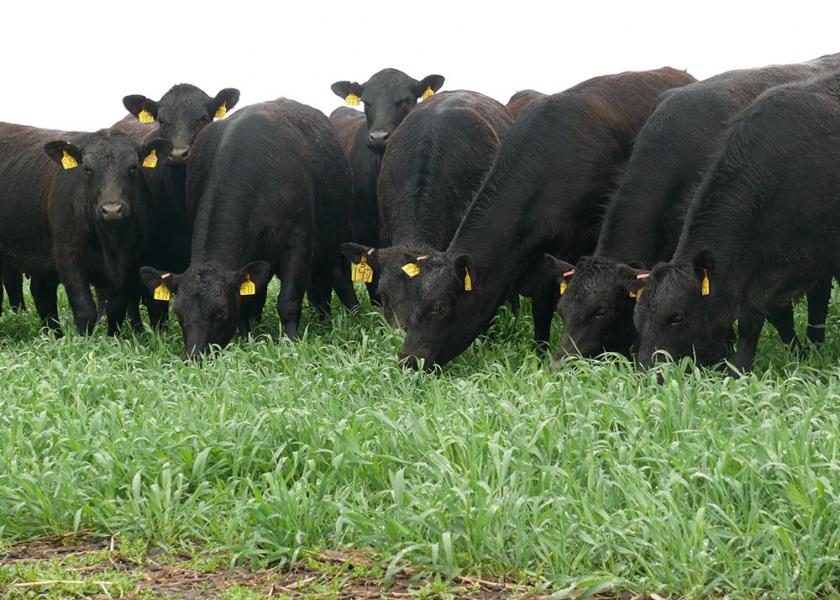Justin Sexten: Improving On Average

As we reflect on 2019 and set goals for 2020, average performance is a common metric used across operations, whether average weaning weight, daily gain, or cost of production, you name it, we all look to improve our averages.
Perhaps less involved in goal setting but certainly discussed with friends and neighbors are the outliers that demonstrate our ability to manage for excellence. A rare conversation will focus on a similar average with the improvement being solely due to enhanced uniformity with fewer outliers on either end. A question to consider: which is more financially advantageous in your program if the average is the same, uniformity from top to bottom or bottom-end discounts offset by premiums from top-end excellence?
The technology used in this month’s article demonstrates an opportunity to address variation in a way that actively manages cattle without requiring operator labor or cattle handling. At a time of year when labor and the daylight available to implement management are at a premium this experiment provides an interesting look at how technology might be used to provide a hands off feeding and sorting solution.

Justin Sexten
Jose’ Imaz and co-workers at the University of Sydney published their work in Animals, highlighting a technological approach to measuring performance and behavioral variation in grazing calves as forage availability declined.
The experiment used an automated scale and computerized feeder set up around a central watering location so each time cattle came to water they were weighed and sorted by the technology into either supplemented or unsupplemented groups. The supplement was a free-choice molasses lick block with an ionophore.
Before we get into the results of this experiment, consider the opportunity to use technology to sort cattle in the pasture without gathering the whole group. Rather than scheduling a crew to gather and sort, simply set the technology to sort up a load and schedule the truck. Less operator labor, lower cattle shrink and reduced stress for both the operator and the stock.
The research group categorized forage availability in a simple manner, either high or low. High was the first two days of pasture access while low was the last two-days cattle spent grazing a particular paddock. Not surprisingly as forage availability declined during the grazing period those calves in the supplement group increased molasses block intake.
More specifically as forage availability was reduced, the average daily intake of the molasses block increased from 0.12 lb/hd to 0.25 lb/hd. This increased supplement intake was a product of nearly twice as many feeder visits and a 25% increase in time cattle spent at the feeder during the visit (4.9 minutes compared to to 6.2 minutes).
As expected supplemented calves performed better than unsupplemented. I suspect few are surprised that supplementation increases cattle performance. The news is not in the average performance, but the performance variation the technology captured.
The research group used a C-Lock Smartfeed system to gather behavior details around consumption and feeding frequency. So rather than simply dividing the feed offered by the number of cattle in the pasture, each animal was evaluated using technology, weighing the molasses block during feeding and documenting cattle feeding behavior.
The molasses block intake on any one day ranged from zero to 1.55 lbs / head. Of those calves assigned to the supplement group feeder attendance ranged from 0 to 77.8% of animals visiting on any given day. The technology offers insight to the researchers to further evaluate the performance differences since actual individual supplement intake was known.
If we assume all supplemented cattle are consuming the average amount of feed offered we miss the prospect of precision animal management. Previously we were output focused on the individual and assumed average feed inputs. If an animal under or over performed the group we might attribute to a number of factors such as genetics, health, metabolic efficiency or some combination.
This example shows how real-time average daily gain might be coupled with observations of feeding behavior and incorporated into a strategic supplementation model. Individual feeding in a group or pen is a key challenge to precision livestock management. This work shows hints of ways to manage a pen of individuals.
With continued technology advances someday our goal for the coming year may not focus on improving average but simply seeing how little variation we can achieve. The day may be coming where we set a target marketing weight for the cattle with our desired cost of gain and the technology notifies us when to fill the feeder.
Related stories:







